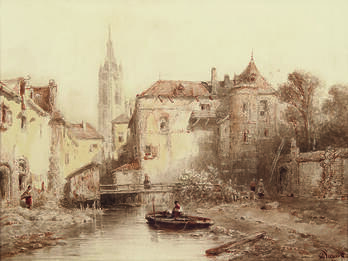The Return of the Jewish Volunteer from the Wars of Liberation
Moritz Daniel Oppenheim
1833–1834
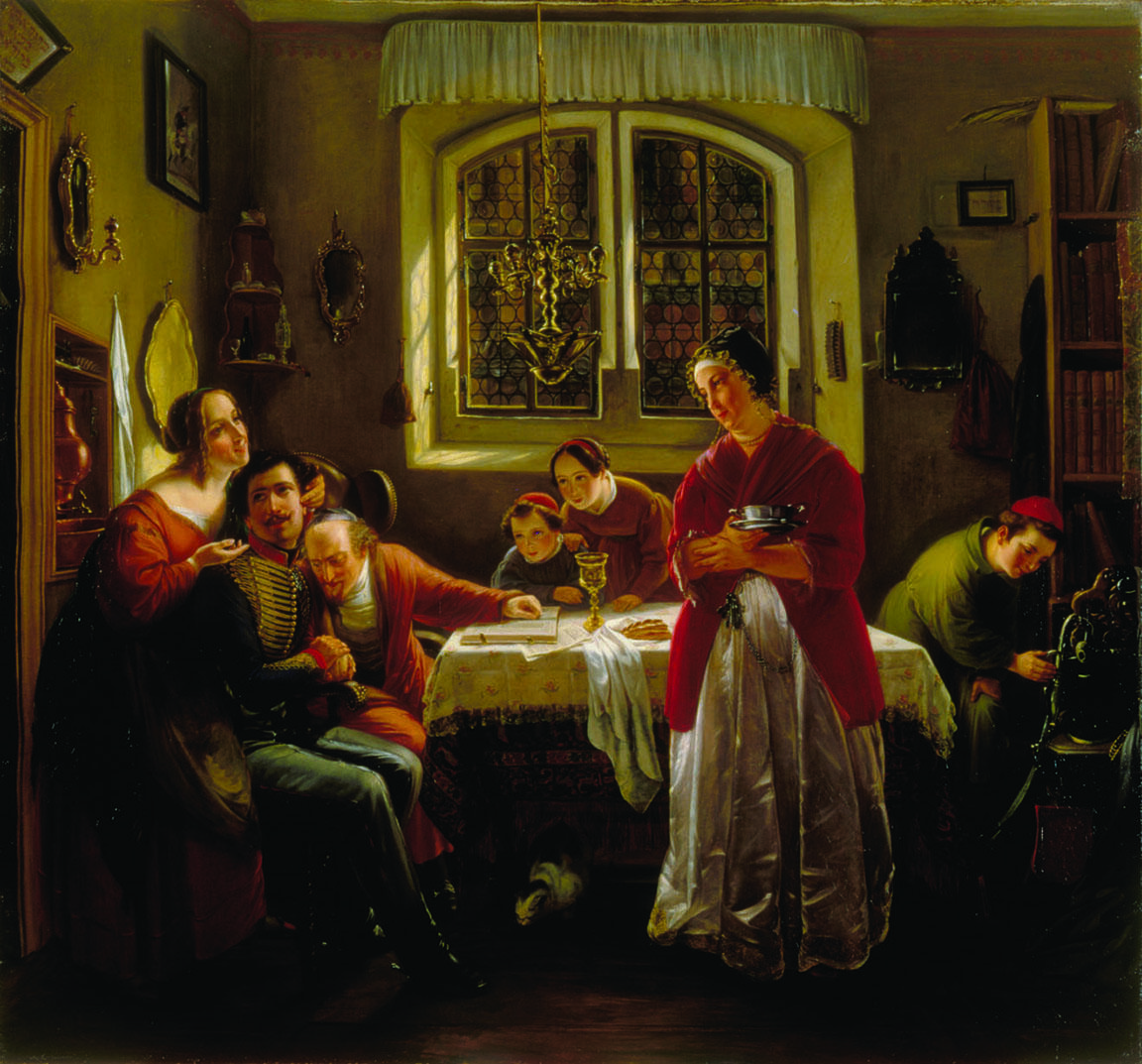
Moritz Oppenheim’s now-iconic painting portrays a range of emotions from pride to ambivalence as various family members regard their young man just returned from the front. This one painting conveys many messages about the benefits of integration and emancipation as well as the inner conflicts they provoked. Although the painting itself is a positive portrayal, and some of the family members admire the act of sacrifice and patriotism of the son, the father looks up from the text he is studying on the Sabbath with consternation. Other artists evoked a darker side, particularly of the horrors of forced conscription of young children in tsarist Russia.
One historian called this painting “a manifesto for civil rights and an identity that can be simultaneously German and Jewish." How is this reflected in the people, objects, and symbols depicted?
Oppenheim depicts the Jewish volunteer at home instead of on the battlefield. What does this emphasis on family life and gender roles suggest about the message Oppenheim wanted to convey?
What vision of German national identity does this painting promote?
Places:

Related Guide
Painters, Sculptors, and Photographers
All over the world, Jewish art reflected the hybrid nature of Jewishness, including the material circumstances and cultural milieu of the larger environment. Individual artisans and artists selected and created according to their personal and Jewish experiences.
Creator Bio
Moritz Daniel Oppenheim
Moritz Daniel Oppenheim, an observant Jew born in Hanau, Germany, became the first Jewish member of the Frankfurt Museum Society, in 1825. Early in his career, he distinguished himself as a pioneer of Jewish self-representation in the European easel-painting tradition with portraits of prominent German Jewish figures like the Rothschild family and Heinrich Heine and his famous meditation on Jewish integration into German nationhood, The Return of the Jewish Volunteer from the Wars of Liberation to His Family Still Living in Accordance with Old Customs (1833– 1834). In the latter part of the nineteenth century, Oppenheim produced many works portraying Jewish family life and scenes of Jewish observances in the home; these include his Scenes from Traditional Jewish Family Life (1866), some twenty works on the subject that received wide distribution in several portfolios and bound editions, and his late work, Das Licht-oder Weihe-Fest (The Kindling of the Hanukkah Lights).
You may also like
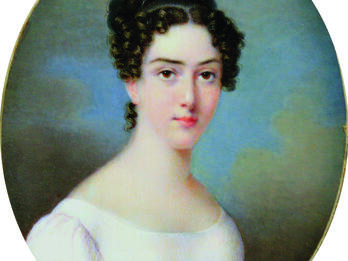
Portrait of a Girl with a Red Belt
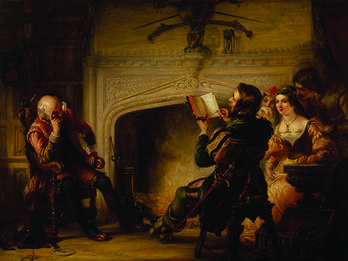
An Early Reading of Shakespeare
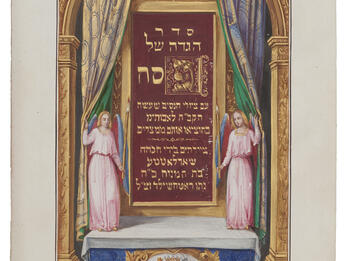
Haggadah (Frankfurt)
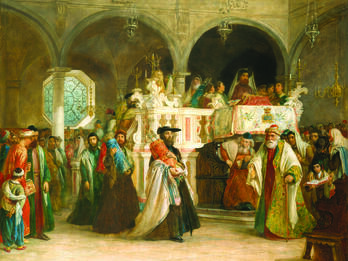
The Feast of the Rejoicing of the Law at the Synagogue in Leghorn, Italy
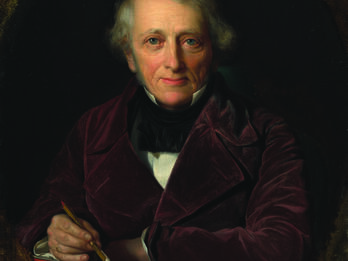
Portrait of Leo Lehmann
